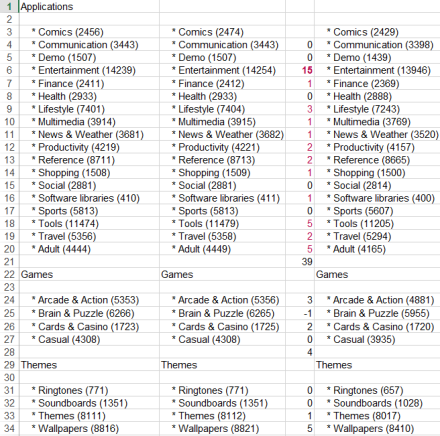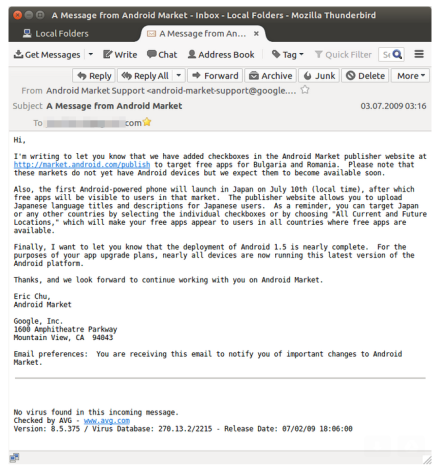The first time I saw an Android Phone was in 2008 during the OSDC Conference in Sydney where one of the presenter from Google had a development phone with him that he showed to some of us. I remember people saying “sure Google making a mobile phone, dont waste my time…”. Guess I don’t need to tell the rest of the story almost 10 years later.
Soon after the conference in early 2009 the HTC Dream (or called G1 in some countries) was launched to public as first developer phone, I ordered one from Google because I was excited about a platform that you could develop for without buying in into a commercial platform. At that time the coding was possible with Netbeans or some Eclipse plugins and some manual tinkering and configuration, in 2010 I created the first application for the so-called Android Market to play with the physics of the release process.
I still have the HTC Dream, unfortunately not in a working condition anymore, I bought the next developer phone in 2010, the Google Nexus One which was running Android Eclaire.
Android HTC Dream 2009
The Android Market was still in its infancy, a mix of hello-world, irrelevant apps and spam all over the place. The whole platform was dominated by individual developers and not by major players. Below a 3 day statistics screenshot I made in 2010, you can see the numbers did not change significantly, in 1 day 40 apps where added, now it around 2000 to 4000 new apps a day. My app did show up in the “new app” section, something impossible to achieve today.

Android Market 2010
Anyway, it was and it continues to be an interesting experience, though I find it a pity it is so hard to get an independent created app get noticed.
Bck to today, I did some experiments with a new app that I just released. Getting my hands dirty with NFC development, I released a simple app, it it supposed to read NFC tags, the early version does nothing but checking if the hardware supports NFC, that’s a Java/Android no-brainer, a one method call. I invented an app name that did not exist in Google Search, I call it “NFCheckR” for the sake of finding out how fast it appears in the market and in Search. The first release is public within 2 hours on the Google Play, a day later it can be searched in both Google Play and Google Search. The search rank no. 1 is a link to the Google Play followed by dozens of links to dodgy third party sites offering the apps for download, obviously mirroring the Google Play site. Some of them offering weird descriptions as well. It claims it got 90 votes and 5 ratings, despite having only a single (1) download so far (which is no wonder, there are at least a 100 NFC tools).

Google Search
The sites claim the app would run on Windows, Mac and other platforms. I recommend NOT to download from any of these sites !

NFCheckR at third party website
History Lane
One of the first emails from Android Market:

Android Market 2009

